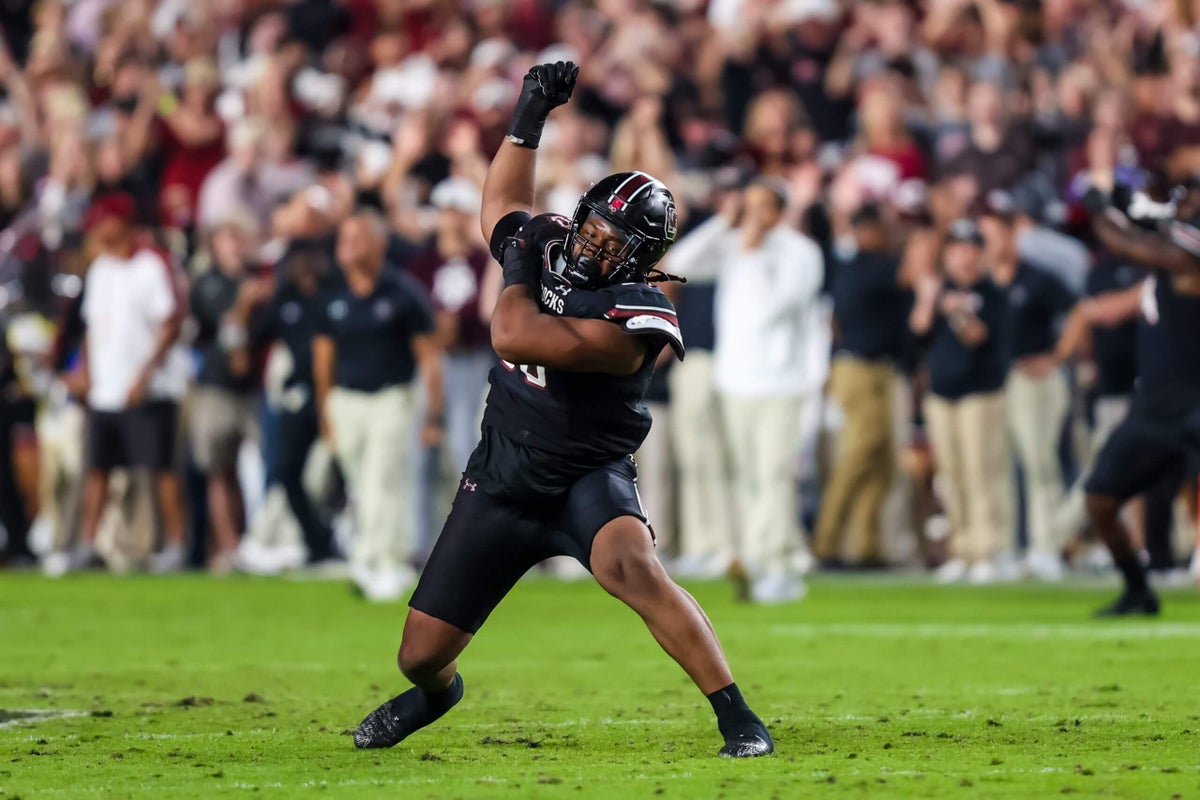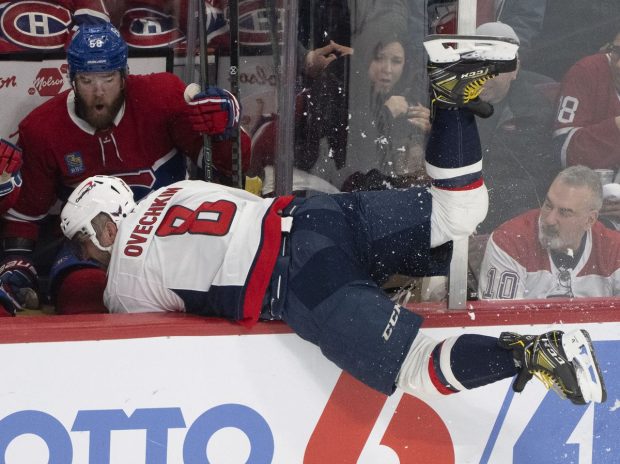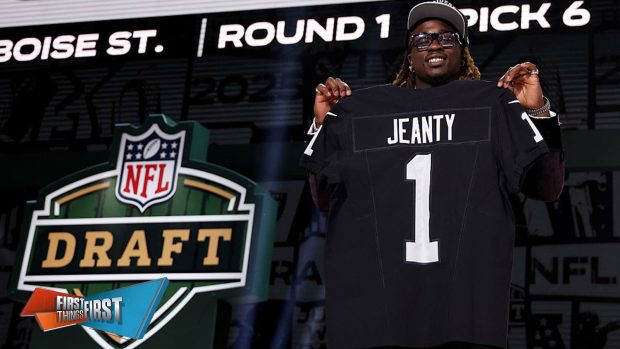

The NFL Draft has come and gone, and the Buffalo Bills have their 2025 class. The Bills had a clear plan for their early rounds and came away with some starting-level and dependable depth.
Now with a day to ponder what the Bills did, where do things go from here? And how is their long-term roster health looking after the draft?
Advertisement
Here’s our post-draft Bills notebook.
The Bills’ offseason mission was abundantly clear: get the defense to catch up to the offense
Of all the moves the Bills have made since free agency began — and there were many — they have added only one player of substance to their offense. That was wide receiver Joshua Palmer, who is likely to be a starter and key contributor to their receiver room in 2025.
Outside of him, every position has the same starting faces and key reserves as last year. Anytime the notion of adding offensive help was brought up in a news conference setting, the Bills pushed back by saying they had one of the top offenses in the NFL. Now, judging it based on all of their actions in free agency and in the first four rounds of the NFL Draft, the Bills backed up those thoughts with how they chose to improve their team for 2025.
The list of moves they made to improve their defense and its collective depth is expansive. In free agency alone, they signed starting defensive end Joey Bosa, rotational defensive lineman Michael Hoecht, rotational defensive tackle Larry Ogunjobi, cornerback Tre’Davious White, cornerback Dane Jackson and safety Darrick Forrest.
In the draft, they continued to attack that side of the ball early by selecting cornerback Maxwell Hairston, defensive tackle T.J. Sanders, defensive end Landon Jackson and another defensive tackle in Deone Walker. And that’s not even including the late-round picks of defensive back Jordan Hancock and cornerback Dorian Strong to help out their depth and special teams units.
Hairston could start as early as 2025, while Sanders and Jackson could be starters to begin 2026. The Bills added six new defensive linemen for their rotation, an overhaul in every sense of the term.
Even if it was a borderline relentless approach to attack their defensive shortcomings from last season, the Bills did an outstanding job of setting themselves up for short-term and long-term starters that extend through the rest of Josh Allen’s prime. Let’s look at it situation-by-situation.
Advertisement
Defensive end: Greg Rousseau and Bosa (one-year deal) will be the starters in 2025, and depending on how Jackson develops this year, Rousseau and possibly Hoecht or Jackson would be the top two in 2026.
Defensive tackle: Ed Oliver and DaQuan Jones are the starters in 2025, with two investments in the draft’s first four rounds in Sanders and Walker. One of Sanders, Walker or DeWayne Carter could play their way into the starting one-technique role in 2026, when Jones is a free agent.
Linebacker: No significant external moves were made outside of extending Terrel Bernard for the long term. Bernard and Matt Milano are the 2025 starters, with Dorian Williams, who is signed through 2026, on deck to become the every-game starter after Milano’s deal expires next offseason.
Cornerback: They locked in Christian Benford through 2029, and drafted his potential long-term running mate in Hairston, who has a four-year rookie deal with a fifth-year option. Unless Hairston flops, boundary cornerback will be the least of their draft concerns for a long time.
Safety: It won the offseason award for the most misunderstood position due to the team’s belief in starter Taylor Rapp and 2024 second-round pick Cole Bishop, who is likely to start in 2025. Rapp is signed through 2026 to a team-friendly deal, and Bishop is signed through 2027. Fifth-round pick Jordan Hancock could be a sneaky option to start down the line, too.
The Bills don’t have a perceived short-term issue in 2026 outside of depth and special teams. Their sole focus on defense this offseason is likely to help them significantly over the next three seasons, while questions on offense will dominate the 2026 offseason.
Why the T.J. Sanders pick might be a sneaky insurance plan for Ed Oliver
Let’s start by saying there is no legitimate concern in the building over Oliver’s abilities. Even in a down year in 2024, he was still one of their most consistently good defenders, just not making the game-changing highlight plays that he has the potential to do. And in no way does the team drafting Sanders at No. 41 signal that it is looking for a way out from Oliver anytime soon. The Bills believe in Oliver and have not wavered from that at any point. However, sometimes draft picks have hidden benefits, even if they’re not said out loud. That’s what multi-year roster planning is all about. And this is a perfect example.
Advertisement
Sanders is not a direct threat to Oliver’s playing time in 2025 by any means, as Oliver is only 27 and in the prime of his career. That said, the Bills do need more out of their top defensive tackle, especially with his upcoming cap hits.
The team didn’t use many contract restructures this offseason to create cap space in 2025, but Buffalo did do it with Oliver’s deal, making it all the more likely he will be on the team in 2026 as well. However, Oliver’s cap hits in 2026 (age-28 season) and 2027 (age-29) are $24.2 million, followed by $25.7 million.
Those are two hefty cap hits that need the production to match, given how many large contract extensions the Bills have handed out this offseason, none bigger than to Allen. The Bills likely wouldn’t try to get out of Oliver’s deal in 2026, but they could save almost $15 million in cap space that year if they make it a post-June 1 designation.
The 2027 offseason is the more likely starting point, in which the Bills can save over $13 million on the cap that year without pushing any dead cap down the road to 2028. A lot will depend on the next two years of performances from both Oliver and Sanders, but it’s something to keep in the back of your mind.
Was it a potential mistake to largely ignore offense? Maybe not
You have to give the Bills credit for feeling so convinced that their offensive performance from 2024 can carry over to 2025 that they pretty much ignored it in the offseason. Palmer was a nice addition due to his separation skills and potential vertical ability to give the Bills something they didn’t have a lot of last year at receiver, but he’s not a game-changer by any means.
The Bills have already re-adopted the “everybody eats” mantra from 2024 into 2025, with Allen not only wearing a hat sporting the phrase but also telling reporters in April that it’s who they are as an offense. What was most interesting, though, was the lack of assets used to address quickly approaching future needs.
James Cook, very loudly, is a free agent after the 2025 season, and there is concern not only if they can get him signed to a long-term deal, but also if they have someone who can fill his shoes should he leave next offseason.
Advertisement
Not as loudly, center Connor McGovern and left guard David Edwards are free agents in 2026 and due for a sizable raise due to their play, either in Buffalo or elsewhere. Given its cap situation, the team may not be able to bring all three back, and the Bills didn’t use any of their picks in the first five rounds to address running back or offensive line.
However, there are a few internal developments that could help the offense feel a bit different than it did last year, even with basically the entire same supporting cast. Without question, the top one is tight end Dalton Kincaid. There is some Kincaid fatigue out there, considering his exorbitant yet not-rooted-in-reality expectations entering the 2024 season, but that wasn’t his fault. He also sustained some pretty ill-timed injuries, one being a knee injury that could have ended his season.
Kincaid has a bit of a buy-low, post-hype sleeper feel as he enters 2025. He’s healthy again, he’s likely taking the team’s advice to get stronger in the postseason and he can be the single-most important key to giving the Bills a different element to their game. In addition to Kincaid, the Bills are hoping for a jump from second-year wide receiver Keon Coleman while remaining internally optimistic that wide receiver Curtis Samuel can build on his late-year and playoff success in 2025.
It would be another big development if backup running back Ray Davis would show further signs that he can take over the top job should Cook leave this offseason. In his only opportunity as the starter, Davis smashed a helpless Jets team for 152 total yards on 23 touches. A step forward in 2025 could go a long way.
Lastly, the duo of interior offensive linemen, Alec Anderson and Sedrick Van Pran-Granger, could sneakily be auditioning for a starting job in 2026. Anderson, who plays either guard or center, was at his best as their sixth offensive lineman and might need to prove he’s ready for a starter’s role with his reps in the preseason and whenever injury strikes.
Van Pran-Granger struggled in his Week 18 start against the Patriots, and the Bills likely will need to see growth to have him be in starting consideration in the future.
Those six players could be the keys to answering many of their 2026 offseason questions.
(Top photo of T.J. Sanders: Jeff Blake / Imagn Images)
This news was originally published on this post .











Be the first to leave a comment